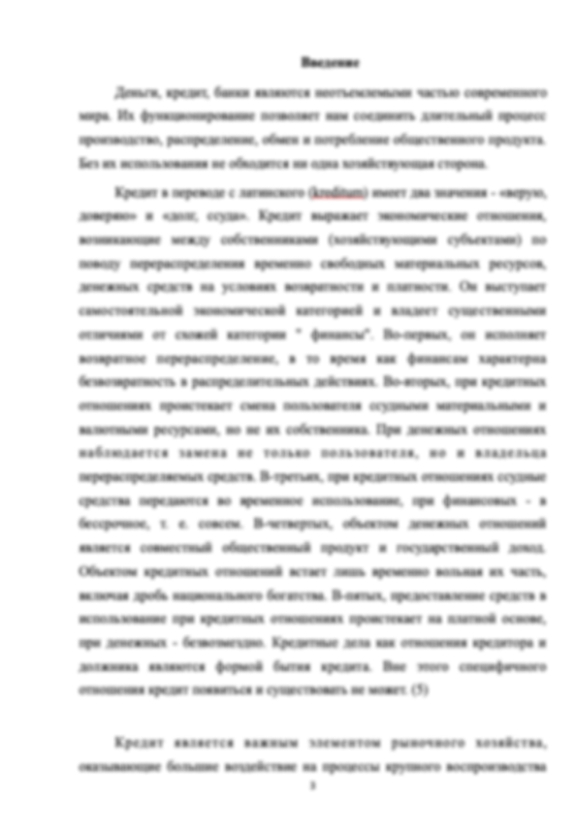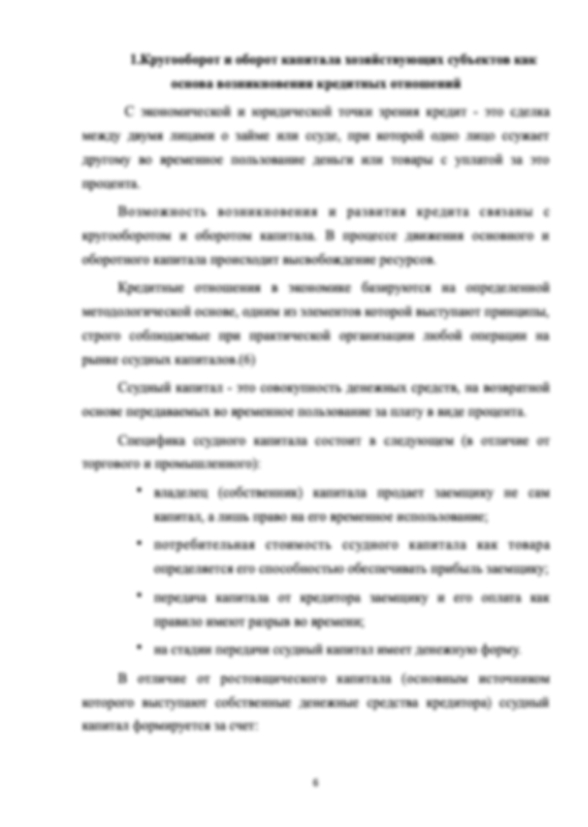Хорошо.
Информация о работе
Подробнее о работе

Перевод статьи, название: Planning and decision making
- 20 страниц
- 2021 год
- 1 просмотр
- 0 покупок
Гарантия сервиса Автор24
Уникальность не ниже 50%
Фрагменты работ
Пример перевода первого абзаца:
Планирование, первая управленческая функция, устанавливает концепцию, цели и задачи организации. Руководители считают планирование своим самым ценным инструментом. Концепция - это больше, чем просто цель; это точное объяснение причины существования организации и целей, которых она старается достичь. Концепция дает организации чувство цели и набор ценностей, которые объединяют работников в их общем будущем. Управлять организацией без предварительной концепции - это все равно, что посадить людей в лодку и отправиться в путь, не говоря никому при этом, куда именно. Лодка будет просто менять направление, а не двигаться к общей цели.
Planning, the first managerial function, is setting the organization’s vision, goals, and objectives. Executives find planning to be their most valuable tool. A vision is more than a goal; it’s a broad explanation of why the organization exists and where it’s trying to go. It gives the organization a sense of purpose and a set of values that unite workers in a common destiny. Managing an organization without first establishing a vision is like getting everyone in a rowboat excited about going somewhere, but not telling them exactly where. The boat will just keep changing directions rather than speeding toward an agreed-on goal.
Top management usually sets the vision for the organization and then often works with others in the firm to establish a mission statement. A mission statement outlines the organization’s fundamental purposes. It should address:
The organization’s self-concept.
Its philosophy.
Long-term survival needs.
Customer needs.
Social responsibility.
Nature of the product or service.
The mission statement becomes the foundation for setting specific goals and objectives. Goals are the broad, long-term accomplishments an organization wishes to attain. Because workers and management need to agree on them, setting goals is often a team process. Objectives are specific, short-term statements detailing how to achieve the organization’s goals. One of your goals for reading this chapter, for example, may be to learn basic concepts of management. An objective you could use to achieve this goal is to answer the chapter’s Test Prep questions.
Planning is a continuous process. A plan that worked yesterday may not be successful in today’s market. Most planning also follows a pattern. The procedure you’ll follow in planning your life and career is basically the same as the one businesses use. It answers several fundamental questions:
1. What is the situation now? What are the success factors affecting the industry participants and how do we compare? What is the state of the economy and other environments? What opportunities exist for meeting people’s needs? What products and customers are most profitable? Who are our major competitors? What threats are there to our business? These questions are part of SWOT analysis, which analyzes the organization’s strengths and weaknesses, and the opportunities and threats it faces, usually in that order. Opportunities and threats are often external to the firm and cannot always be anticipated.
Weaknesses and strengths are more often internal and therefore more within reach of being measured and fixed. The following are some of the general issues companies consider when conducting a SWOT analysis: What external success factors affect the industry? How does our firm measure up to other firms? What are our social objectives? What are our personal development objectives? What can we do to survive and prosper during a recession? For more on SWOT analysis, see the Taking It to the Net exercise at the end of this chapter.
2. How can we get to our goal from here? Answering this question is often the most important part of planning. It takes four forms: strategic, tactical, operational, and contingency.
Strategic planning is done by top management and determines the major goals of the organization and the policies, procedures, strategies, and resources it will need to achieve them. Policies are broad guidelines for action, and strategies determine the best way to use resources. At the strategic planning stage, top managers of the company decide which customers to serve, when to serve them, what products or services to sell, and the geographic areas in which to compete. Take Taco Bell, for example. Recognizing the economic slump, the company introduced a “value menu” of items like cheese roll-ups and bean burritos with low prices. It also went after the “fourth-meal” (late- night) crowd and introduced several low-calorie, low-fat Fresco items. Blockbuster was not as successful in fighting off the introduction of new technology offered by Netflix and Hulu, making its brick-and-mortar stores obsolete.
In today’s rapidly changing environment, strategic planning is becoming more difficult because changes are occurring so fast that plans—even those set for just months into the future—may soon be obsolete. Think of how the amusement park company Six Flags had to change its plans when the price of gas went from a couple of dollars per gallon to over four dollars and then dropped back to the three-dollar range again.
Clearly, some companies are making shorter-term plans that allow for quick responses to customer needs and requests. The goal is to be flexible and responsive to the market.
Tactical planning is the process of developing detailed, short-term statements about what is to be done, who is to do it, and how. Managers or teams of managers at lower levels of the organization normally make tactical plans. Such plans can include setting annual budgets and deciding on other activities necessary to meet strategic objectives. If the strategic plan of a truck manufacturer, for example, is to sell more trucks in the South, the tactical plan might be to fund more research of southern truck drivers’ wants and needs, and to plan advertising to reach them.
Operational planning is the process of setting work standards and schedules necessary to implement the company’s tactical objectives. Whereas strategic planning looks at the organization as a whole, operational planning focuses on specific supervisors, department managers, and individual employees. The operational plan is the department manager’s tool for daily and weekly operations. An operational plan may include, for example, the specific dates for certain truck parts to be completed and the quality specifications they must meet.
Contingency planning is the process of preparing alternative courses of action the firm can use if its primary plans don’t work out. The economic and competitive environments change so rapidly that it’s wise to have alternative plans of action ready in anticipation of such changes. For example, if an organization doesn’t meet its sales goals by a certain date, the contingency plan may call for more advertising or a cut in prices at that time. Crisis planning is a part of contingency planning that anticipates sudden changes in the environment. For example, many cities and businesses have developed plans to respond to terrorist attacks. You can imagine how important such plans would be to hospitals, airlines, the police, and public transportation authorities.
Instead of creating detailed strategic plans, the leaders of market-based companies (companies that respond quickly to changes in competition or to other environmental changes) often simply set direction. They want to stay flexible, listen to customers, and seize opportunities—expected or not. Think of how stores selling to teenagers must adapt to style changes.
The opportunities, however, must fit into the company’s overall goals and objectives; if not, the company could lose its focus. Clearly, then, much of management and planning requires decision making.
Decision Making: Finding the Best Alternative
Planning and all the other management functions require decision making. Decision making is choosing among two or more alternatives, which sounds easier than it is. In fact, decision making is the heart of all the management functions.
The rational decision-making model is a series of steps managers often follow to make logical, intelligent, and well-founded decisions. Think of the steps as the six Ds of decision making:
1. Define the situation.
2. Describe and collect needed information.
3. Develop alternatives.
4. Decide which alternative is best.
5. Do what is indicated (begin implementation).
6. Determine whether the decision was a good one, and follow up.
Managers don’t always go through this six-step process. Sometimes they have to make decisions on the spot—with little information available. They still must make good decisions in all such circumstances. Problem solving is less formal than decision making and usually calls for quicker action to resolve everyday issues. Both decision making and problem solving call for a lot of judgment.
Problem-solving teams are two or more workers assigned to solve a specific problem (e.g., Why aren’t customers buying our service contracts?). Problem-solving techniques include brainstorming, that is, coming up with as many solutions as possible in a short period of time with no censoring of ideas. Another technique is called PMI, or listing all the pluses for a solution in one column, all the minuses in another, and the implications in a third. The idea is to make sure the pluses exceed the minuses.
You can try using the PMI system on some of your personal decisions to get some practice. For example, should you stay home and study tonight? List all the pluses in one column: better grades, more self-esteem, more responsible behavior, and so on. In the other column, put the minuses: boredom, less fun, and so on. We hope the pluses outweigh the minuses most of the time and that you study often. But sometimes it’s best to go out and have some fun, as long as doing so won’t hurt your grades or job prospects.
ORGANIZING: CREATING A UNIFIED SYSTEM
After managers have planned a course of action, they must organize the firm to accomplish their goals. That means allocating resources (such as funds for various departments), assigning tasks, and establishing procedures. A managerial pyramid shows the levels of management (see Figure 1).
Top management, the highest level, consists of the president and other key company executives who develop strategic plans. Job titles and abbreviations you’re likely to see often are chief executive officer (CEO), chief operating officer (COO), chief financial officer (CFO), and chief information officer (CIO) or in some companies chief knowledge officer (CKO). The CEO is often also the president of the firm and is responsible for all top-level decisions. The CEO and president are the same person in over half of the S&P 500 companies, including big companies such as United Parcel Service, John Deere, and General Electric.
CEOs are responsible for introducing change into an organization. The COO is responsible for putting those changes into effect. His or her tasks include structuring work, controlling operations, and rewarding people to ensure that everyone strives to carry out the leader’s vision. Many companies today are eliminating the COO function as a cost-cutting measure and assign- ing that role to the CEO. Often, the CFO participates in the decision to cut the COO position. The CFO is responsible for obtaining funds, planning budgets, collecting funds, and so on. The CIO or CKO is responsible for getting the right information to other managers so they can make correct decisions. CIOs are more important than ever to the success of their companies given the crucial role that information technology has come to play in every aspect of business.
Middle management includes general managers, division managers, and branch and plant managers (in colleges, deans and department heads) who are responsible for tactical planning and controlling. Many firms have eliminated some middle managers through downsizing and have given their remaining managers more employees to supervise. Nonetheless, middle man- agers are still considered very important to most firms.
Supervisory management includes those directly responsible for supervising workers and evaluating their daily performance; they’re often known as first- line managers (or supervisors) because they’re the first level above workers. This is the first management position you are most likely to acquire after college.
Tasks and Skills at Different Levels of Management
Few people are trained to be good managers. Usually a person learns how to be a skilled accountant or sales representative or production-line worker, and then—because of her or his skill—is selected to be a manager. Such managers tend to become deeply involved in showing others how to do things, helping them, supervising them, and generally being active in the operating task.
The further up the managerial ladder a person moves, the less important his or her original job skills become. At the top of the ladder, the need is for people who are visionaries, planners, organizers, coordinators, communicators, morale builders, and motivators. Figure 2 shows that a manager must have three categories of skills:
1. Technical skills are the ability to perform tasks in a specific discipline (such as selling a product or developing software) or department (such as marketing or information systems).
2. Human relations skills include communication and motivation; they enable managers to work through and with people. Communication can be especially difficult when managers and employees speak different languages. Skills associated with leadership—coaching, morale building, delegating, training and development, and supportiveness—are also human relations skills.
3. Conceptual skills let the manager picture the organization as a whole and see the relationships among its various parts. They are needed in planning, organizing, controlling, systems development, problem analysis, decision making, coordinating, and delegating (see the Reaching Beyond Our Borders box).
Looking at Figure 2, you’ll notice that first-line managers need to be skilled in all three areas. However, they spend most of their time on technical and human relations tasks, like assisting operating personnel and giving directions, and less time on conceptual tasks. Top managers, in contrast, need to use few technical skills. Instead, they spend almost all their time on human relations and conceptual tasks. A person who is competent at a low level of management may not be competent at higher levels, and vice versa. Different skills are needed at different levels.
Staffing: Getting and Keeping the Right People
To get the right kind of people to staff an organization, the firm has to offer the right kind of incentives. For example, Google’s gourmet chefs cook up free lunches, dinners, and snacks for employees. Would such an incentive appeal to you? How important to you is pay relative to other incentives?
Staffing is recruiting, hiring, motivating, and retaining the best people available to accomplish the company’s objectives. Today, staffing is critical, especially in the Internet and high-tech areas. At most high-tech companies, like Google, Sony, and Microsoft, the primary capital equipment is brain- power. A firm with innovative and creative workers can go from start-up to major competitor in just a few years.
Many people are not willing to work at companies unless they are treated well and get fair pay. They may leave to find a better balance between work and home. Staffing is becoming a greater part of each manager’s assignment, and all managers need to cooperate with human resource management to win and keep good workers.
Back to school for top managers
As the overseer of an organization’s “big picture,” CEOs need to have strong conceptual skills. In today’s global market, the scope of those skills is expanding rapidly as businesses increasingly focus on globalization in their long-term planning.
The shift from being a country- focused company to a global- focused company increases the CEO “to-do” list. Business leaders need to study a country’s political, legal, and regulatory systems and the impact they have on important business functions such as supply chains, capital markets, and the productivity of human resources. It’s also critical to thoroughly under- stand a nation’s culture and respect its strengths and challenges.
There isn’t a single global market, but rather a complex network of globally connected “local markets.” Such “local markets” require their own set of global standards that require local training, development, and assessment. Aligning a company’s business applications across such diverse net- works is no simple task. However, leaders at companies such as Coca-Cola, Nestlé, and IBM have done a noteworthy job.
Samuel Palmisano, former CEO of IBM, perhaps summed up the global management challenge best in his book Adapting from Re-Think: A Path to the Future. In it he states, “The fundamental question for companies is not whether to compete globally, but how to compete globally.” That’s the challenge CEOs will have to answer company-by-company as they refine their conceptual skills.
Перевод данной статьи под названием "Planning and decision making" был выполнен квалифицированным и дипломированным переводчиком в 2021 году.
Форма заказа новой работы
Не подошла эта работа?
Закажи новую работу, сделанную по твоим требованиям


